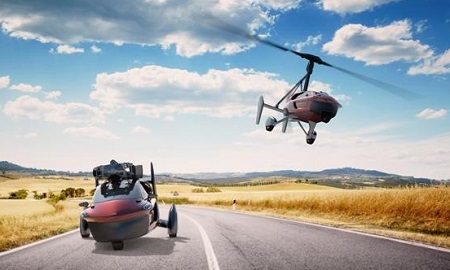Robot Chickens and Flying Cars!
19 May 2017
At Argenta, technology is a critical aspect of what we do, so we thought we would share a few whacky technologies ideas from industry!
Robots enter the chicken shed, Jorn Madslien

Free-range egg production may soon be transformed by robots that collect eggs from the floor – if a Dutch biosystems engineer has his way.
Eldert van Henten, head of the Farm Technology Group at Wageningen University in the Netherlands, and his team have designed a prototype egg-picking robot. Dubbed the PoultryBot, it was presented at the world’s biggest industrial fair, Hannover Messe, in April.
Compared with many of the sleek robots and futuristic vehicles displayed at the fair, the bot looks clunky – and that is before it is covered in messy wood shavings in a chicken shed. But it contains technology that farmers are crying out for. Egg picking is “a tough job,” said van Henten, given that some free-range producers have 10,000 laying hens.
The story affects us all as consumers of some 180 eggs per person per year. In Europe, battery cages for laying hens were banned in 1999 and replaced by free-range systems where, usually, the hens lay eggs in their nests. “But sometimes they don’t, and then they lay eggs in the litter on the floor,” said van Henten. These must be collected before they go off, and because they tend to encourage other chickens to lay their eggs on the floor too.
To develop the robot, the team used off-the-shelf hardware, including a laser scanner for localisation and to collect data points of the environment, a camera looking for eggs, and odometry that guides velocity, acceleration and directional changes.
The researchers were at first concerned that the machine might upset the hens. But they found that after a day or two the birds were instead intrigued, actively pecking at it, even lying on top of it. “We may have to produce a chicken-proof model,” quipped van Henten.
The team also had to make sure the robot could pick up the eggs without breaking them, which it does using a rotating basket. Production models will need to have storage bins that will be emptied automatically during recharging. “Eggs are quite fragile, and when this becomes a product, it should be easy to use with proper user interfaces and servicing built in,” said van Henten.
The PoultryBot’s navigation, localisation and collision avoidance system had to be simple to keep costs low. The software includes algorithms that guide the robot through the farm building as it sweeps the floor for eggs. These tell the robot to prioritise locations where the eggs are frequently laid, such as dark spaces. Known locations are 3D mapped and the software is automatically updated.
The bot can also carry sensors to monitor animal status and behaviour, as well as temperature, humidity and dust levels in the hen house.
Are flying cars set to finally take off?, Parizad Mangi

Efforts are ramping up to finally get cars off the ground.
The Kitty Hawk Flyer, funded by Google’s co-founder Larry Page, has taken to the skies for the first time, and should be available for sale by the end of the year. And an on-demand air taxi prototype developed by German start-up firm Lilium has recently completed its maiden flight over Bavaria. The two-seater Eagle jet managed to perform a mid-air transition from hover mode to wing-borne forward flight.
But there’s more. Dutch firm Pal-V has just announced that its automobile-gyroplane hybrid Liberty (pictured) is going into production later this year, and should be available to customers in 2018. The three-wheeled, 4m vehicle – which has been in development since 2008 – can switch between drive and fly mode, using a retractable wind-powered rotor and propeller on top that unfolds for lift. Made from composite materials, the vehicle is equipped with two 230hp gasoline engines and a Semi-Automatic Conversion System to switch between drive and fly modes within five minutes.
The company aims to ensure that its creation complies with European and US flight and road regulations, claiming that half of the development costs went towards this. The vehicle is being audited by the European Aviation Safety Agency (EASA), but not everyone is sure that it will pass. “As with any new design concept, this hybrid aircraft will need to be type-approved by the EASA before it can fly in European airspace, and this can be a lengthy process,” Richard Taylor, a Civil Aviation Authority spokesman, told PE. “The manufacturer will need to work closely with EASA to ensure the design does have the potential to be granted a type certificate. Safety will of course always be the priority.”
Pal-V also plans to install autonomous technology in its vehicle within a decade.
There are many other efforts under way to produce flying cars. The US-Slovakia collaboration Aeromobil is taking pre-orders for the limited first-edition run of its flying car, priced at £1 million. And Dubai is planning to launch flying taxis as early as July. Meanwhile, Singapore is gearing up to accommodate a network of flying taxis by 2030. The Singaporean government is in talks with companies to start trials on passenger-carrying drones, with Scorpion from the Russian start-up firm Hoversurf being the front-runner.
Prompted by constraints on the amount of available land, the flying taxis are a move towards revamping Singapore’s transport system, which is also planned to have driverless pods in the near future.
Check out our latest update on the Innovate project we are working on.
Accreditations: Jorn Madslien and Parizad Mangi, Institution of Mechanical Engineers, May 2017.
Back to Blog listings